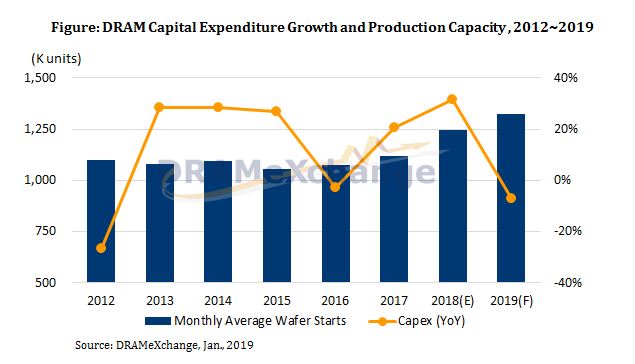DRAM Prices Expected to Climb
The average selling price (ASP) of DRAM chips is projected to increase by 5 percent from the second quarter to the end of the third quarter as tight supply persists, according to market watcher DRAMeXchange.
While demand for DRAM chips, particularly from the smartphone market, has been tepid this year, the pace of technology migration has been slow and contributed to a tightening of supply, according to Avril Wu, research directory of DRAMeXchange, which tracks pricing of memory chips.
"This situation is anticipated to last to 2018 since suppliers will not take on significant additional production capacity in the short term," Wu said in a press statement. "Meanwhile, ASPs of various DRAM products will remain high."
Unlike previous supply and demand cycles in memory chips, DRAM chips are now being used in more and broader applications, said DRAMeXchange. New applications for DRAM such as graphic processing, cloud computing, automotive electronics and hardware acceleration for machine learning have helped to stabilize ASPs for DRAM, the firm said.
DRAMeXchange expects shipments of smartphones and PCs to remain relatively light in the third quarter. But DRAM demand stemming from the creation of new data centers and the coming of the holiday season for consumer electronics products will propel the DRAM market and drive up prices, the firm predicted.
In the contract DRAM market, where contracts for third quarter DRAM supply are now being negotiated, prices of server DRAM modules have spiked, DRAMeXchange said. The firm expects ASPs for server DRAM modules to grow an average of 3 to 5 percent in the third quarter.
This year is expected to be the strongest in years for memory chip prices, thanks to tight supply, which is projected to propel the overalll semiconductor industry to grow by a double digit percentage.
在线留言询价

DRAM Prices Forecast to Crash in Q1

DRAM Market to See Lower Capital Expenditure and Moderated Bit Output in 2019 Due to Weak Demand

DRAM Outlook Dims for 2019
- 一周热料
- 紧缺物料秒杀
| 型号 | 品牌 | 询价 |
|---|---|---|
| MC33074DR2G | onsemi | |
| BD71847AMWV-E2 | ROHM Semiconductor | |
| TL431ACLPR | Texas Instruments | |
| RB751G-40T2R | ROHM Semiconductor | |
| CDZVT2R20B | ROHM Semiconductor |
| 型号 | 品牌 | 抢购 |
|---|---|---|
| TPS63050YFFR | Texas Instruments | |
| IPZ40N04S5L4R8ATMA1 | Infineon Technologies | |
| STM32F429IGT6 | STMicroelectronics | |
| BP3621 | ROHM Semiconductor | |
| BU33JA2MNVX-CTL | ROHM Semiconductor | |
| ESR03EZPJ151 | ROHM Semiconductor |
- 周排行榜
- 月排行榜
AMEYA360公众号二维码
识别二维码,即可关注






















